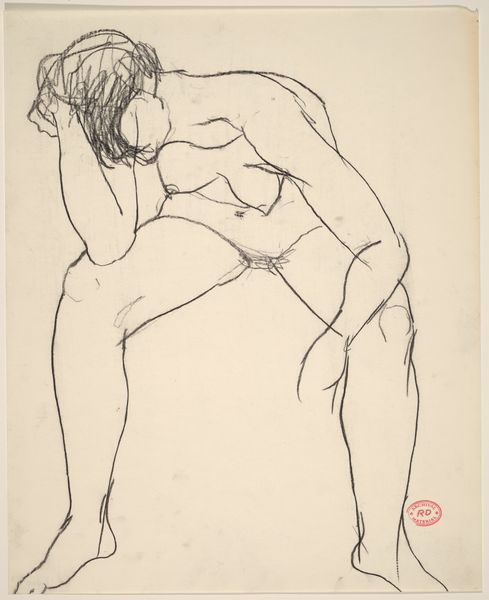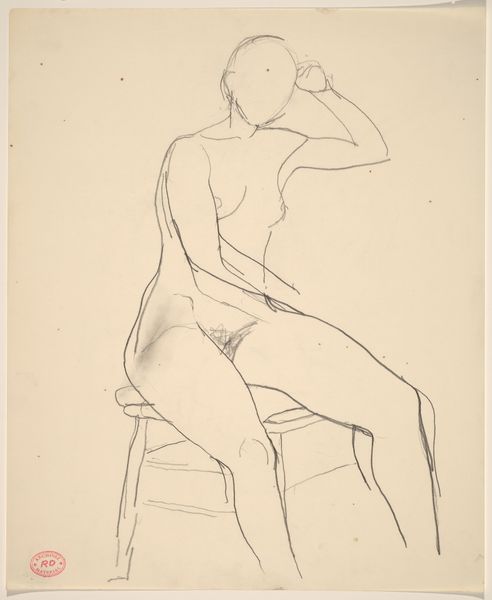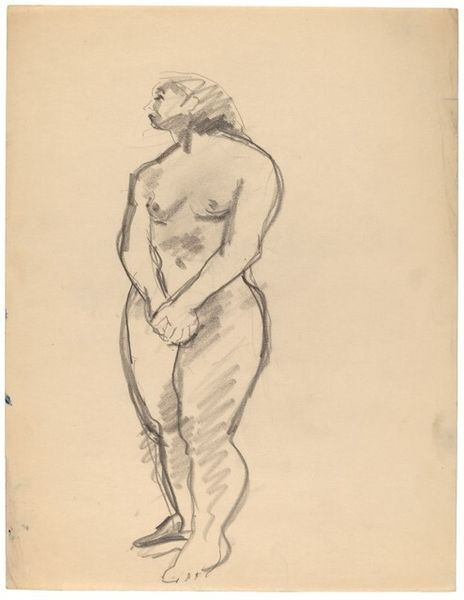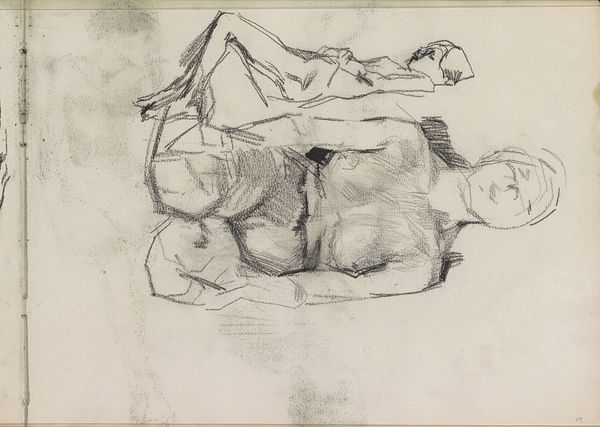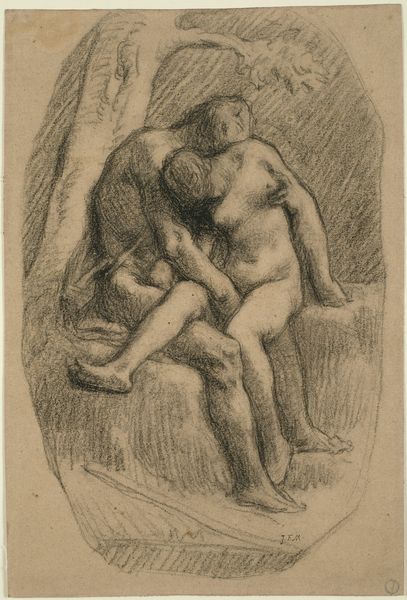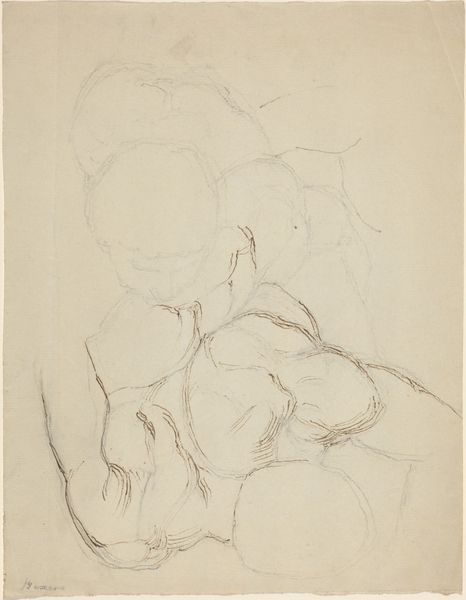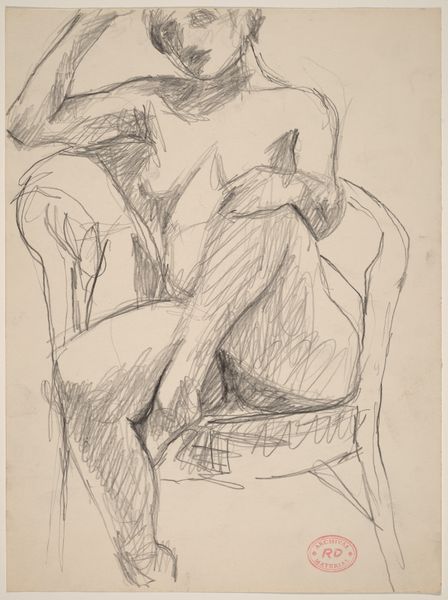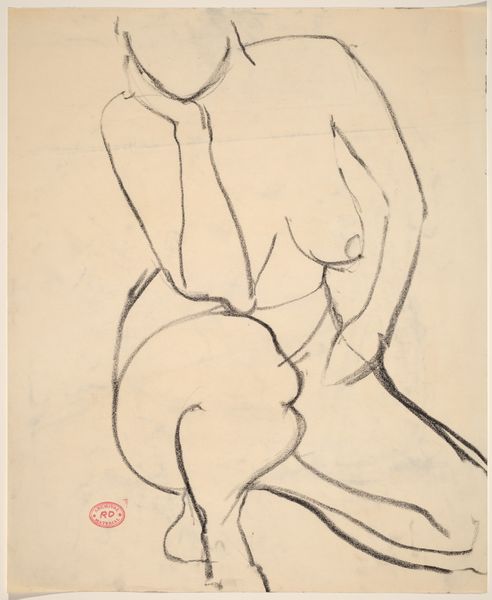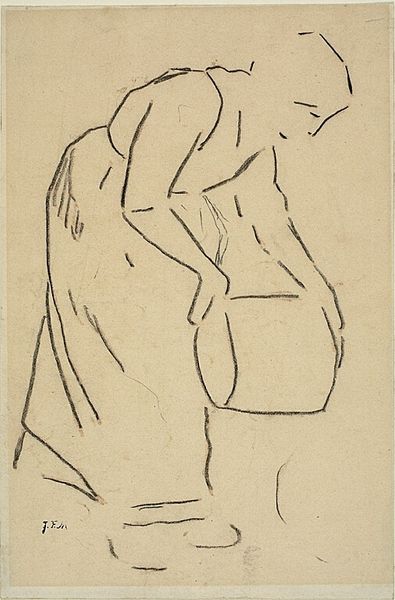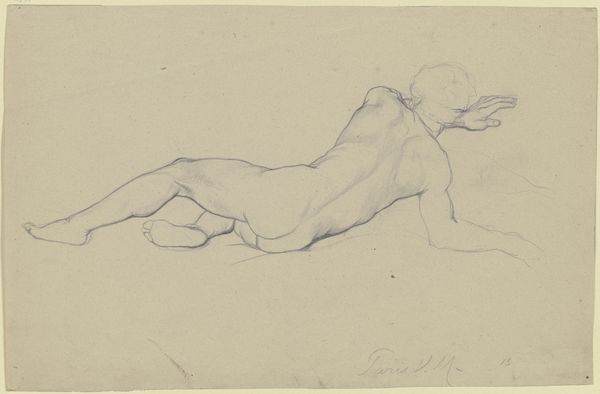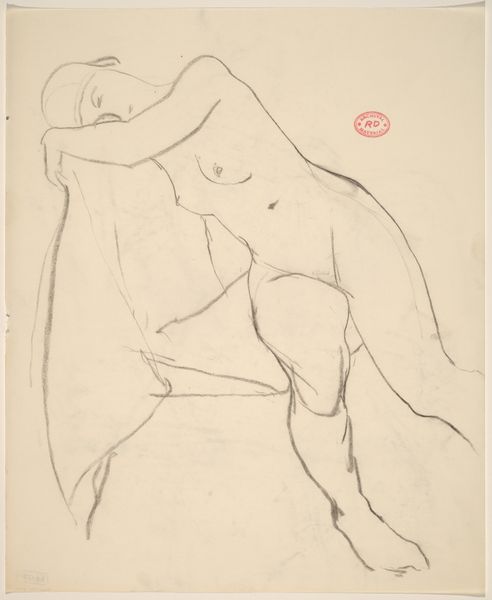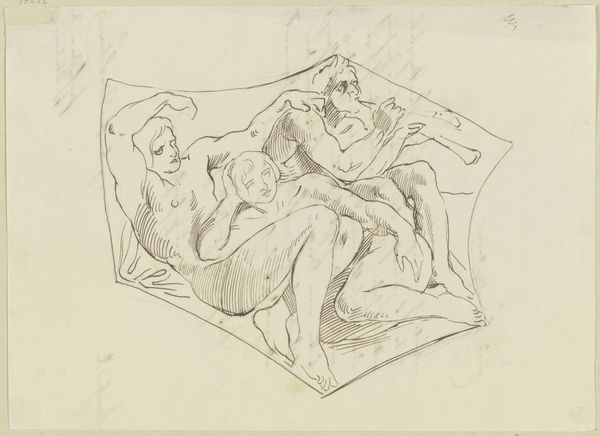
After Puget_ Hercules Resting 1884 - 1887
drawing, pencil
#
drawing
#
classical-realism
#
figuration
#
pencil drawing
#
pencil
#
history-painting
#
academic-art
Copyright: Public Domain
Paul Cézanne made this drawing of Hercules Resting using graphite on paper. While seemingly traditional, the very act of sketching a classical sculpture like this was revolutionary in its time. The drawing's power lies in its simplicity. The graphite, applied with varying pressure, creates a range of tonal values that suggest depth and volume. Look closely and you can see how Cézanne built up the form with short, hatched lines, a technique common to academic drawing. Yet, he also disrupts this tradition with his deliberately unfinished areas. The sketchiness of the lines gives the drawing a sense of immediacy, of process. Cézanne, like many artists of his era, was grappling with how to represent the world in a way that was both true to perception and true to the materials of art. This drawing is not just a copy of a sculpture; it's an exploration of form, light, and the very act of seeing. In this, he elevates the humble materials of paper and graphite to a level of expressive power, blurring the lines between craft and fine art.
Comments
No comments
Be the first to comment and join the conversation on the ultimate creative platform.
